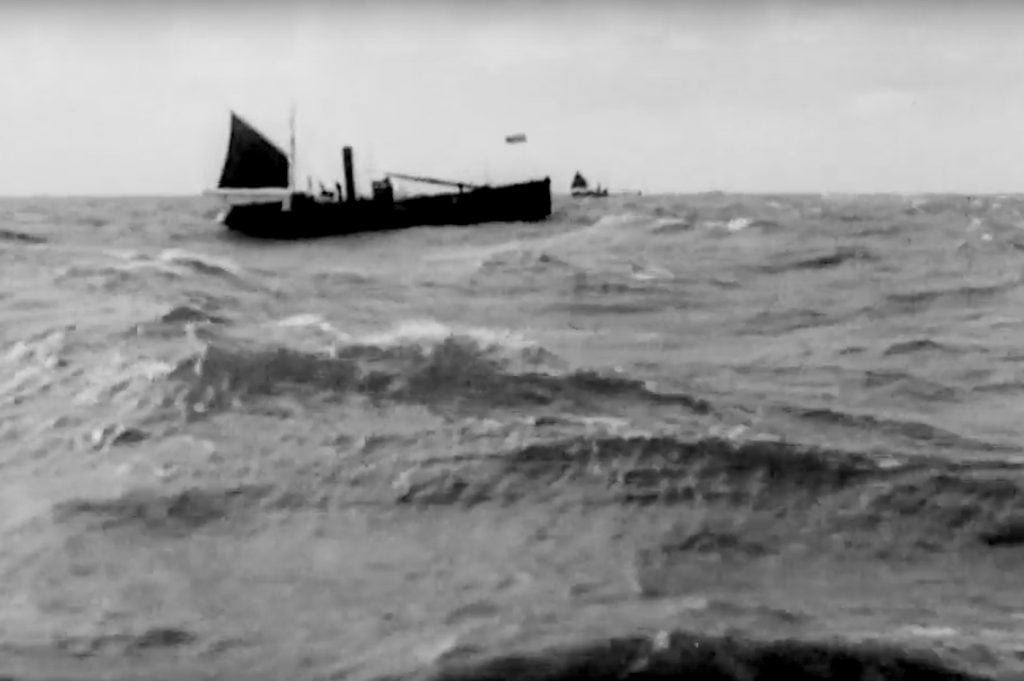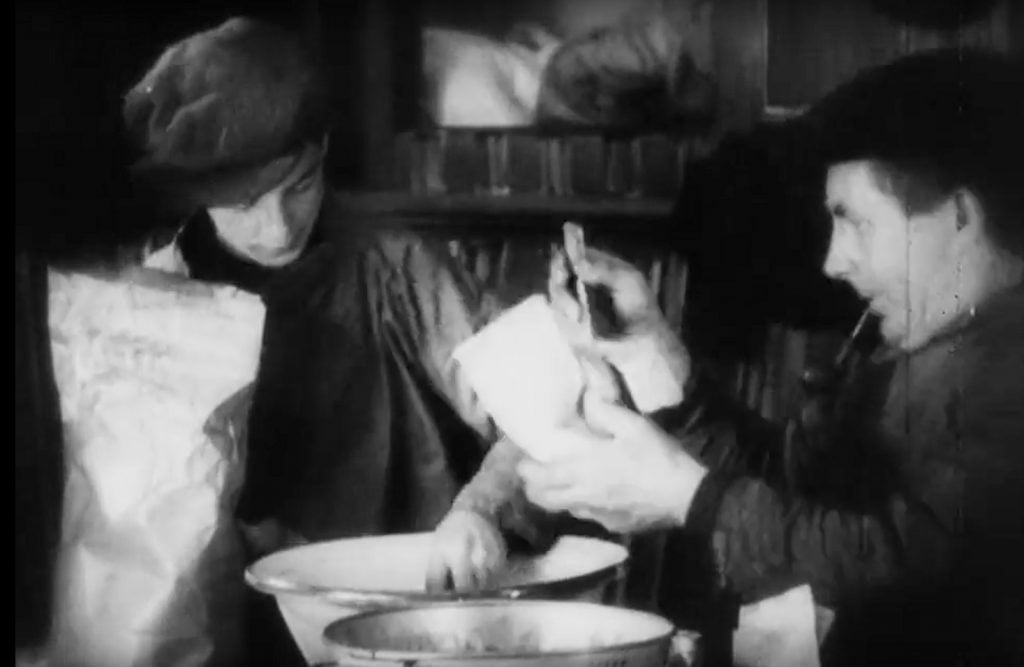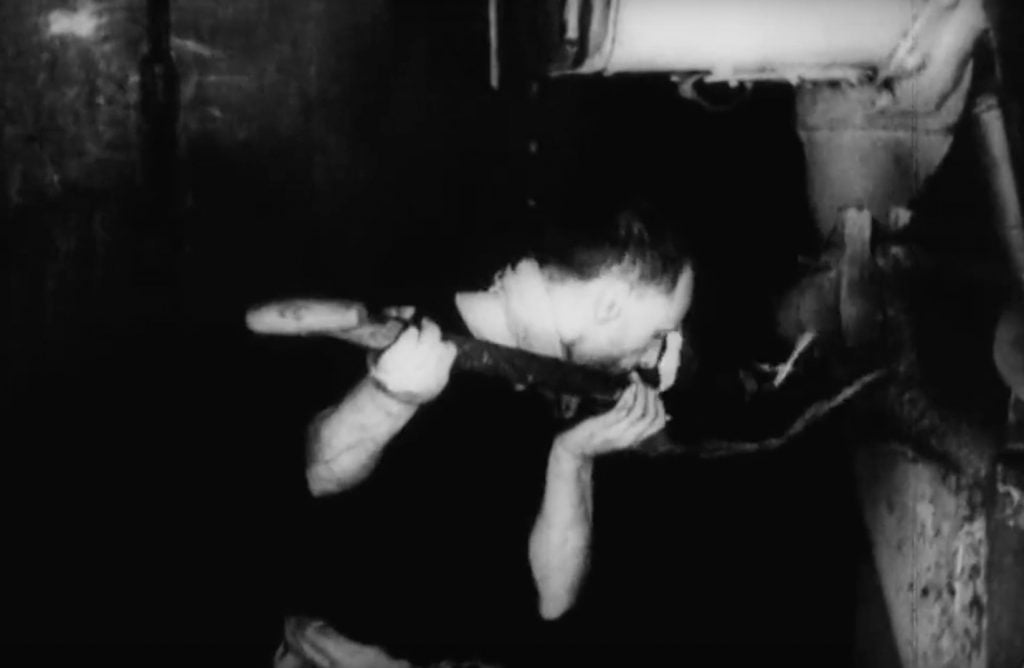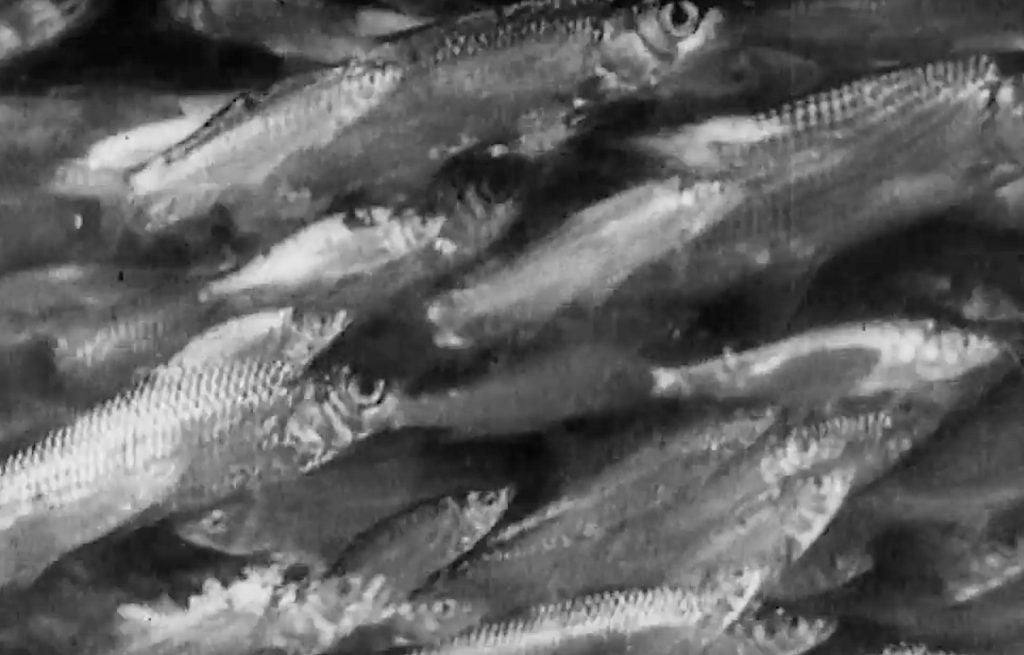The first documentary, famously directed by Grierson; funded by herring historian & Financial Secretary to the Treasury, AM Samuel
DRIFTERS (DOCUMENTARY FILM)
Grierson, Empire Marketing Board, 1929, 60 min, UK
John Grierson, the Scottish film director and producer coined the term documentary to describe the nature and value of film capturing observed behaviour in the ‘real world’. He was reviewing Robert Flaherty’s Samoan-set Moana (1926), which, like its predecessor Nanook of the North, used ‘real people’, even though in staged recreations of cultural rituals that had mostly disappeared.
He was working in the United States and was inspired by Flaherty. He was even more inspired by Sergei Eisenstein, particularly Battleship Potemkin (1925).
He came back to Britain, where Eisenstein’s work was banned as communist propaganda, filled with a vision of filmmaking that would capture working lives. It would work in a more ‘British’ and less heroic way, but derive its rhythms from the modernist energy of Eisenstein’s montage techniques.
The Film

Drifters was the film he made and it sparked off the British Documentary Movement. About the North Sea herring fishing, it is the only feature documentary for which he takes full directorial credit, but it would be hard to overstate its importance in the development of British film.
It’s not that the film doesn’t project a romantic heroism in the fishermen – it’s certainly far less concerned with the curing and the market when they get back to harbour. But in the context of Flaherty and Eisenstein it exudes British diffidence.

Driven by the tension between tradition and the machine age, it focuses mostly on the boats, the crew, nets and catch. It sets the details of passing on traditions through the avuncular relationship between the men and a young apprentice, juxtaposing this with montage sequences of the steam engine, the herring shoal and its other predators.

Grierson shot the shoal in a scientific research tank and the herrings look vaguely bemused. Grierson didn’t have a huge budget – and the technical capacity to capture Blue Planet‘s spectacular Clupeidae shoal action didn’t exist – but the herrings he shot will almost certainly have inspired William Hodgson’s 1950s enthusiasm for a herring-based research / visitor attraction centre (see Tourism: Missed Opportunities).

How the Film Came to Be
Herrings weren’t at the front of Grierson’s mind when he approached Stephen Tallents at the Empire Marketing Board. Amongst its other activities, the EMB supported film production as background publicity – soft marketing in today’s parlance. It promoted the work of government agencies and products the government wanted people to buy.
Sadly, the EMB’s film budget had been given to Rudyard Kipling to produce one about the King’s Christmas pudding (a boy dreams of gathering its ingredients from across that family of nations known as the British Empire).
Tallents knew, however, that the Financial Secretary to the Treasury was a herring man.
He will have known this because the Financial Secretary was none other than, AM Samuel, author of The Herring; Its Effect on the History of Britain (1918) – During the year January 1st, 1913, to December 31st, 1913, Samuel had written, I ate 161 herrings in one form or another, but, being a Norwich man, principally as bloaters… Patriotically engaged, Samuel’s loosely-connected compendium of herring facts was itself prime EMB territory.
Tallents: Can you do a film about herrings?
Grierson: I’ve been waiting all my life to make a film about herrings!
With such an inspirational topic Samuel might have been tempted to fund the film out of his own back pocket, but he will have known about the herring industry’s problems with the collapse of traditional markets in Germany and Russia and about the government’s active interest in persuading an apathetic nation to build a home market for the fish.
Grierson, the EMB and AM Samuel: a ménage à trois made in heaven. He got £3,000 to make his film (£180,000 in today’s money).
The Impact of Drifters
The young, Leftie film world that would take such inspiration from Grierson and Drifters regarded The Film Society as elitist, but at its home venue, The Tivoli, the Society was finally able to present the UK premiere of Battleship Potemkin. They were looking for another film to make up a double bill and Grierson, who had just finished his film, had been involved in the English titling of Eisenstein’s films.
Ralph Bond, a filmmaker recruited to Grierson’s GPO Film Unit in the mid 30s, recalled the impact Drifters made:
Everybody thought Potemkin, of course, would get all the headlines and that Drifters would be regarded as something that was shown, but not much talked about. Well, the contrary happened. Actually, all the critics who were there, the press people and so forth, were absolutely astounded when they saw Drifters. They realised that this was a new type of filmmaking, a new type of themes for filmmaking and there was tremendous excitement and Drifters was an instantaneous success. And it was because of that success that the government department decided that they would develop the GPO Film Unit – or the EMB Film Unit as it then was. And that’s how the thing developed very rapidly – on the success of Drifters.
It was maybe a little hard on Eisenstein, but it does indicate just how revolutionary Drifters seemed. The cultural importance of the UK Potemkin premiere will have played a key role in attracting the audience that would make good on the premiere of Grierson’s film. It wasn’t just the critics. Edgar Anstey, Arthur Elton, Stuart Legg, Paul Rotha and Basil Wright were all there. Key figures in the movement that grew out of that moment, it was a bit like the Sex Pistols’ 1976 Manchester gig and all the musicians who were apparently there.
On the links below
The links below are to two online versions of the whole film. The first, from the East Anglian Film Archive, comes in at an hour and is presented as a silent film. The second, from what looks like a Spanish film festival screening, comes in at 40 mins, has a contemporary score, goes green for night sequences, blue for the early morning, but is higher resolution and is either from a better print or digitally enhanced.
The difference in film length may be related to the frame speed and/or a possibly shorter US version. I haven’t yet been anal enough to compare the two shot for shot.
I’ve included a link to the British Film Institute shop and its Soviet Influence double bill, high resolution DVD of Drifters and Battleship Potemkin. And I’ve also linked to the mid 1980s interview with Ralph Bond, conducted by Amber Films’ Murray Martin.
On Samuel and The Herripedia
From the point of view of narrative arc, The Herring; Its Effect on the History of Britain is not necessarily the best written of the classic herring books – mainly because it is more interested in beautiful information than structure. My early work on a herring encyclopaedia was more of a straightforward narrative, broken into sections and chapters.
When my then agent, Andrew Hewson of John Johnson, asked Why don’t you make it a proper encyclopaedia? I initially backed away from the idea. It was thinking about Samuel’s book, in the early 2000s, that liberated my thinking.
Delaying the delivery of an actual herring encyclopaedia, however, I was at that point becoming enmeshed in work as a member of Amber film & photography collective, whose filmmakers, coincidentally, in the 1970s had been recognised by Edgar Anstey as taking the work of the British Documentary Movement forward.
Meanwhile, Amber’s Current Affairs Unit in the early 80s created the template for the Workshop Moverment’s Miners’ Campaign Tapes, in which the group were participants. And The Miners’ Campaign Tapes received the Grierson Award in 1985.
It’s a funny old world.
External Links
See also
- BRITISH FISHERY
- CALLER HERRIN’ (FILM)
- DRIFT OR GILL NETTING
- ENGLAND’S PATH TO WEALTH AND HONOUR
- HARENG SAUR MONOLOGUES
- HERRING INDUSTRY BOARD
- HERRING LASSES
- MUIR, JIM (HERRING INTERVIEW, ACHILTIBUIE)
- OLIVIER, LAURENCE
- PURSE SEINING
- RECIPES FROM THE HERRING BOARD
- RING NET: WILL MACLEAN
- RING NETTING
- SHOALS
- SINGING THE FISHING
- TOURISM: MISSED OPPORTUNITIES
- TRAWLING
- WEDGWOOD
- WILLIAMS, WILLIAM CARLOS: FISH
